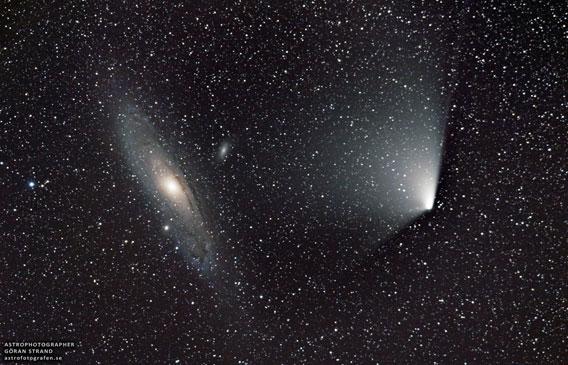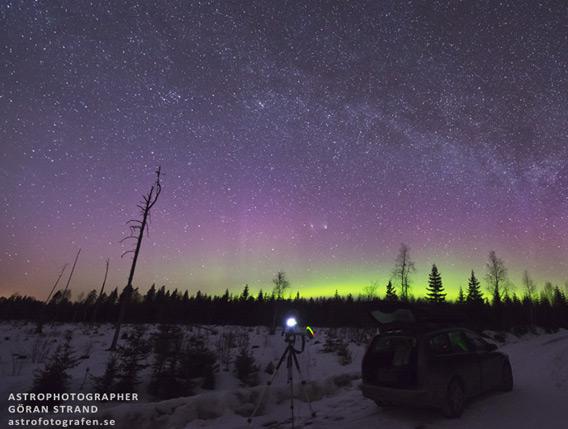After dealing with all the offal from this morning’s post, I figure we could all use a unicorn chaser*, so here is another jaw-dropping shot of comet C/2011 L4 (Pan-STARRS) and the Andromeda Galaxy:

Image credit: Göran Strand, used by permission
That was taken on Apr. 4, 2013 by Swedish astrophotographer Göran Strand, who traveled about 70 kilometers north of the city of Östersund to escape light-polluted skies. It’s a 30-minute exposure, and the detail is amazing. You can see the spiral arms of the galaxy and its two dwarf elliptical companions, and of course the comet is magnificent. Our angle on the tail is now such that we see it spread out, fan-shaped; the broader part looks yellow-red to my eye, while the sharp edge to the right looks bluer. The red part would be due to dust (reflecting and reddening the Sun’s light), and blue from ionized gas glowing like a neon sign. Different types of tails are common in comets.
Strand also caught the pair in a wide-angle shot that shows another galaxy—ours—and the eerie green and purple glow of the aurora borealis:

Image credit: Göran Strand, used by permission
Strand has more breath-taking astrophotography on his blog, and I heartily recommend perusing them. It will remind you that there is good and beauty in the world.
*The term “unicorn chaser” comes from Boing Boing—it’s not about people who chase unicorns, which would be a fun if unlucrative profession, but instead a palate cleanser, a sugary morsel designed to clear your brain after dealing with something awful. I’ve had to use it before.